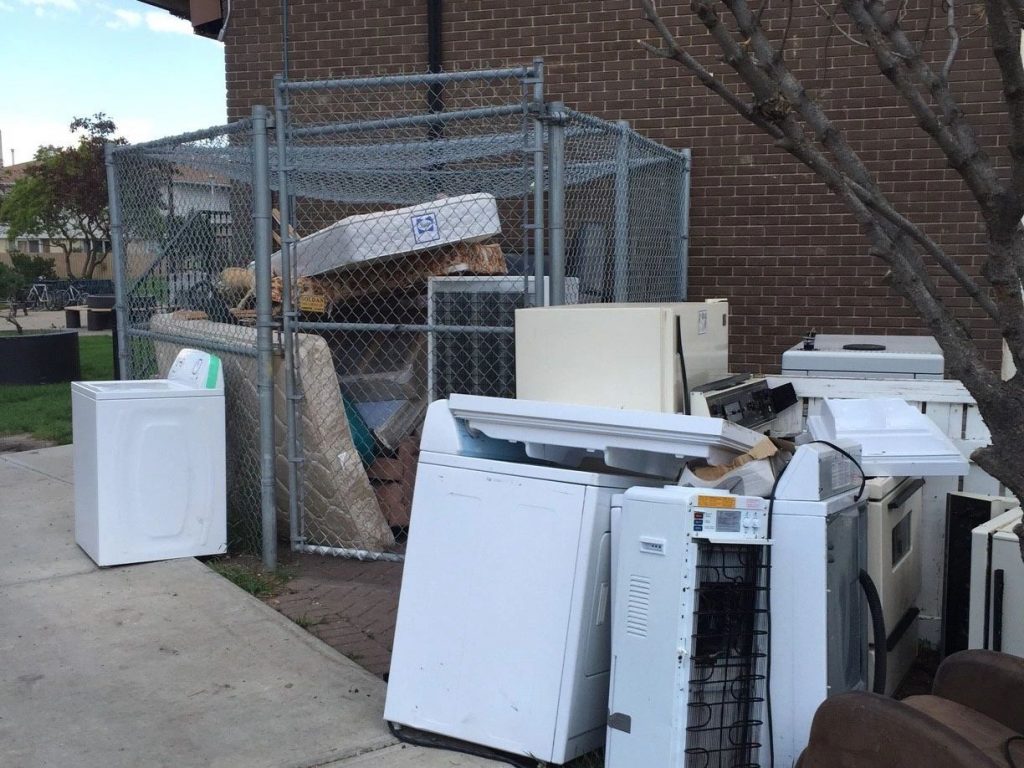Managing large-scale old appliance removal can be a daunting task for businesses, especially when dealing with outdated or non-functional equipment that occupies valuable space. Businesses in Albuquerque dealing with old equipment also often face challenges with old furniture removal. Proper management and execution of this process can ensure a smooth and efficient transition, minimizing disruption and maximizing environmental responsibility. In this guide, we’ll explore the best practices for handling large-scale old appliance removal and offer practical solutions tailored for businesses.
Understanding the Scope of Large-Scale Old Appliance Removal
Assessing the Volume and Types of Appliances
The first step in managing large-scale old appliance removal is to assess the volume and types of appliances that need to be removed. This could include anything from outdated refrigerators, air conditioning units, office electronics, to heavy industrial machinery. Understanding the scope of the removal helps in determining the appropriate resources, time, and cost involved. Additionally, businesses should evaluate the condition of these appliances—whether they can be refurbished, donated, or must be disposed of.
Compliance with Local Regulations
Businesses must comply with local regulations regarding old appliance removal in Albuquerque. The disposal of appliances, especially those containing hazardous materials like refrigerants, must be done in accordance with environmental laws. Non-compliance can lead to hefty fines and environmental damage. Researching and adhering to these regulations ensures that the removal process is legally sound and environmentally responsible.
Planning the Removal Process
Scheduling the Removal at an Optimal Time
Timing is crucial when it comes to old appliance removal. For businesses, especially those operating in Albuquerque, it’s essential to schedule the removal at a time that minimizes disruption to daily operations. Coordinating with a professional removal service that understands the business’s operational schedule can make the process more efficient.
Choosing a Professional Removal Service
Partnering with a reputable and experienced removal service is key to managing large-scale old appliance removal. Businesses should look for services that specialize in handling large appliances and have a track record of responsible disposal practices. In Albuquerque, services that offer old furniture removal alongside appliance removal can provide a comprehensive solution, saving time and resources.
Preparation of Appliances for Removal
Before the removal team arrives, it’s essential to prepare the appliances. This includes unplugging and disconnecting all electrical appliances, draining any fluids, and removing any detachable parts. Proper preparation ensures the safety of both the removal team and the business’s employees, as well as preventing any damage to the premises during the removal process.
Executing the Removal
Coordinating with the Removal Team
Effective communication with the removal team is vital during the execution phase. Businesses should ensure that the team has clear access to the appliances and that any specific instructions are communicated ahead of time. This can prevent delays and ensure that the removal is carried out efficiently and without incident.
Handling of Hazardous Materials
Many old appliances contain hazardous materials such as lead, mercury, or refrigerants that must be handled with care. Professional removal services in Albuquerque are equipped to safely manage these materials, ensuring that they are disposed of in accordance with environmental regulations. This not only protects the environment but also shields the business from potential legal liabilities.
Recycling and Disposal Options
Responsible disposal is a critical aspect of old appliance removal. Many parts of old appliances can be recycled, reducing the environmental impact. Businesses should inquire about the recycling practices of their chosen removal service. In some cases, appliances that are still functional can be donated to charities, providing a second life and helping those in need. Ensuring that as much as possible is recycled or repurposed aligns with corporate sustainability goals.
Post-Removal Considerations
Cleaning and Space Reorganization
Once the old appliances have been removed, businesses should take the opportunity to clean and reorganize the vacated space. This may involve deep cleaning, restructuring the layout for better efficiency, or installing new equipment. The removal of old appliances often provides a chance to optimize space utilization, enhancing the overall productivity of the business environment.
Documenting the Process
Documentation is often overlooked but is a crucial part of the old appliance removal process. Keeping records of the appliances removed, the service provider used, and the disposal methods employed can be important for future reference, especially if there are regulatory requirements to demonstrate compliance. Additionally, businesses should document any cost savings achieved through recycling or repurposing the appliances.
Evaluating the Service Provider
After the removal is complete, it’s beneficial to evaluate the performance of the service provider. Was the process smooth and efficient? Did they adhere to the agreed-upon schedule and handle the appliances responsibly? Gathering feedback from involved parties and assessing the overall experience can help businesses make informed decisions for any future old appliance removal needs.
Conclusion
Managing large-scale old appliance removal requires careful planning, execution, and follow-up. By understanding the scope, complying with regulations, choosing the right service provider, and ensuring responsible disposal, businesses can efficiently handle this challenging task. In Albuquerque, where businesses may also need to manage old furniture removal, finding a service provider that offers comprehensive solutions can further streamline the process.



